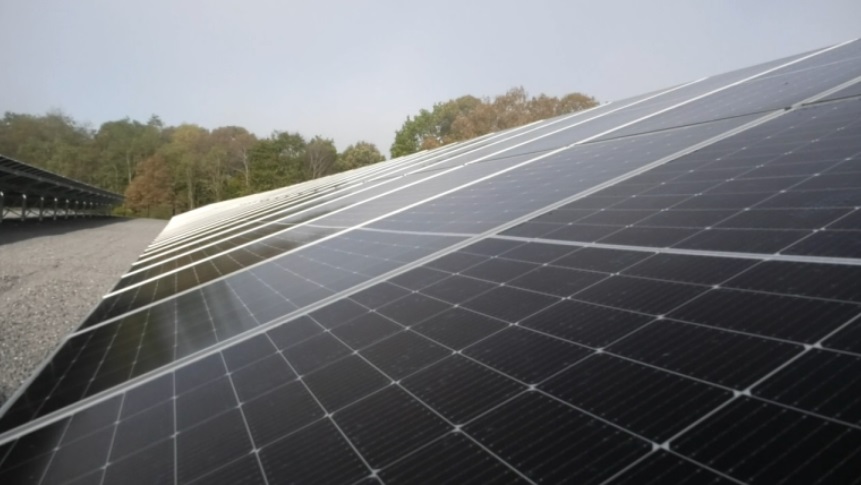|
|
|
HAPPY FRIDAY
October 11, 2024
|
|
|
|
Welcome to Energy Right’s weekly roundup! This week our team visited just over half a dozen different
counties on our mission for
Clean Energy the Right Way.
|
|
|
|
|
|
Solar Energy: A Lifeline for Virginia’s Farmers?
|
 |
|
|
|
Farmers in Virginia are facing significant challenges this year—particularly corn growers—who have experienced a 41% drop in production due to this summer’s drought followed by heavy rains. Brad Monahan, a fifth-generation farmer with crops in both Sussex and Surry counties, has said: “It certainly has been a tough growing season for corn… It’s a below-average crop on yield and for the quality of the grain itself. We really needed an average or above-average crop to make it worthwhile and
profitable. Our input costs are at higher levels—we’re paying more for corn seed and fertilizer but the low price we’re selling corn for isn’t providing much relief.”
Given the vital role that corn plays as a staple crop in Virginia, it can be a strategic move for farmers to explore ways to diversify their income while continuing to produce this important crop. One promising avenue is solar energy. By leasing a portion of their land for a solar array plan, farmers can establish a stable income stream that helps cushion the financial risks linked to unpredictable crop yields. With solar energy, farmers can enjoy a dependable source of revenue that remains consistent as long as the sun rises and sets, allowing them to sustain operations and invest in their futures without compromising their commitment to agriculture.
This approach not only provides financial security but also allows farmers to continue producing essential crops like corn for generations, without the constant fear of significant financial losses or risking the viability of the land with permanent structures. By embracing solar energy, Virginia’s farmers can secure their livelihoods and contribute to a more resilient agricultural landscape, ensuring that they can thrive even in challenging conditions. Diversifying income through solar leases could be one key to help the long-term viability of farming in Virginia.
|
|
|
|
|
|
|
|
|
|
|
|
All-of-the-Above and On Top—Schools Cutting Costs with Solar Roofs
|
|
|
|
|
The discussion of where solar can be put has been a hot topic for many years. Should it be on agricultural land? What about parking lots? What if your county doesn’t have much land to use, where would you put it? That question is being answered in counties that lie in the middle of all of those issues—by installing these arrays on top of commercial buildings and schools.
Recently, schools in Roanoke, VA and Greenbrier County, WV have taken the less is more
approach with solar installations. These installations have been placed on top of the buildings and helped cut operating costs for the school district. With the installation of these solar panels, schools can generate their own electricity which can help offset or even eliminate their energy needs. This shift not only reduces monthly utility bills but also protects schools from future energy price increases. Additionally, the savings from reduced energy costs can be redirected towards educational programs, resources, and infrastructure improvements to create a better schooling district altogether.
The solar arrays on these schools provide long-term benefits while utilizing an otherwise empty roof. With a plan in motion, these schools now have a flexibility for future spending, learning opportunities. These types of projects also draw the eye of local communities and members in a good way, showing how clean energy is an obtainable goal for the local economy as well as the environment.
|
|
|
|
|
|
|
|
|
|
|
|
This week, our team travelled to:
Brunswick, Dinwiddie, Fluvanna, Halifax, King and Queen, Lunenburg, and Montgomery counties.
|
|
|
|
|
|
|
|
|
|
This week, Energy Right had the exciting opportunity to engage with the ongoing comprehensive plan
review and update in Montgomery County. Nearby is Virginia Tech, where we connected with faculty and explored the beautiful campus. We appreciate our partnerships with higher education institutions across the Commonwealth and believe together we are making significant strides toward clean energy the right way!
|
|
|
|
|
|
|
|
Ag and solar can coexist, SolarFest speaker says
|
|
At the 2024 SolarFest, Matt Abele, executive director of the NC Sustainable Energy Association, emphasized the importance of balancing solar energy and agriculture. He explained that only 0.28% of North Carolina farmland is occupied by solar projects, while 10% is used for housing developments. Abele highlighted the economic benefits, including a 1,682% increase in property tax revenue from solar developments, and reassured attendees that property values remain unaffected by nearby solar farms.
Abele also showcased agrivoltaics, where solar panels and agriculture coexist. By grazing sheep on solar farms and growing crops under elevated panels, farmers can maximize land use while securing additional income, supporting both agriculture and renewable energy expansion.
|
|
|
|
|
|
|
|
|
|
NEXT WEEK
We’ll be going to Brunswick, Conference, Fluvanna, Franklin, Lunenburg, Russell, and Wise counties as well as Roanoke City.
Have a great weekend!
|
|
|
|
|
|
|
|
|
|
Greenbriar County has a new record for WV. Alongside the economic benefits of the project in the
longterm, the school itself is looking at up to $2M back thanks to the Inflation Reduction Act. View the link to see the whole video for more information.
|
|
|
|
|
|
|

